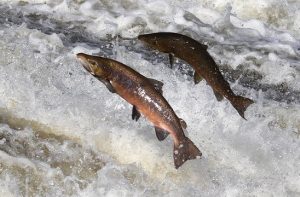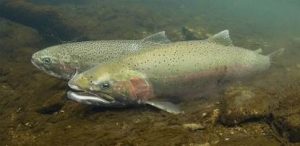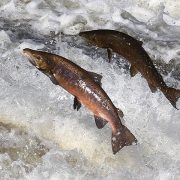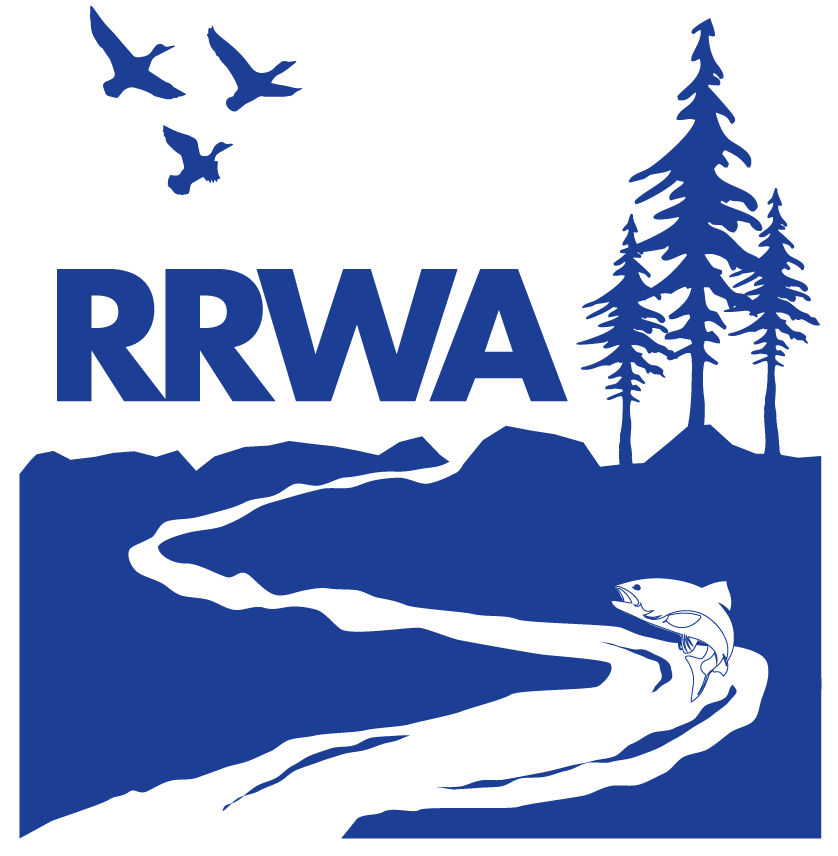Public Opportunity to Review and Discuss Fish Habitat Enhancement Projects
 It’s hard to imagine the Russian River without salmon or steelhead. These iconic fish were a major food supply for indigenous people and early settlers. They once gave the river the reputation as a world-renowned fly-fishing destination, are a critical link in the riparian food web – and are spectacularly beautiful.
It’s hard to imagine the Russian River without salmon or steelhead. These iconic fish were a major food supply for indigenous people and early settlers. They once gave the river the reputation as a world-renowned fly-fishing destination, are a critical link in the riparian food web – and are spectacularly beautiful.
In the early 2000s, the native populations of fish dropped so low that coho salmon were listed as endangered and Chinook salmon and steelhead were listed as threatened under the Endangered Species Act. Federal, state and local agencies and non-profit organizations reacted by funding fish recovery projects, including restoring sections of streams, removing barriers to fish migration, and creating a “nursery” that raises coho from eggs and releases them at various ages into spawning streams.
One of the most significant actions occurred in 2008, when National Marine Fisheries Service (NMFS) issued the Russian River Biological Opinion, requiring the Sonoma County Water Agency (Sonoma Water) and the US Army Corps of Engineers (USACE) to make changes in how these agencies used the Russian River and Dry Creek for water supply and flood control purposes.
 The Biological Opinion focuses on three areas of improvement: Habitat enhancement in Dry Creek (which carries water from Lake Sonoma to the Russian River); the development of a lagoon management program for the estuary (where the river meets the Pacific Ocean in Jenner and where there is plentiful food and habitat for young steelhead before they head to sea); and lowering river flows to provide better habitat for coho and steelhead (releases from Lake Sonoma and Lake Mendocino can sometimes result in water that moves too swiftly for the young, small fish).
The Biological Opinion focuses on three areas of improvement: Habitat enhancement in Dry Creek (which carries water from Lake Sonoma to the Russian River); the development of a lagoon management program for the estuary (where the river meets the Pacific Ocean in Jenner and where there is plentiful food and habitat for young steelhead before they head to sea); and lowering river flows to provide better habitat for coho and steelhead (releases from Lake Sonoma and Lake Mendocino can sometimes result in water that moves too swiftly for the young, small fish).
It’s been nearly 12 years since the Biological Opinion was issued, and Sonoma Water and USACE have met major milestones:
- Working with private landowners, more than three miles of habitat has been constructed and enhanced on 14-mile Dry Creek. These projects have stabilized banks, replaced invasive species with native riparian plants, and created riffles, pools and side channels for young fish to escape predators and high stream flows. The final three miles of habitat enhancement are in the planning stages with construction scheduled to begin in 2021. These projects will be funded primarily by the USACE.
- Annually, a lagoon management plan is developed and implemented. The plans provide a blueprint for Sonoma Water for reducing flood risk if the mouth of the Russian River closes between May 15 and October 15, when young steelhead spend time in the estuary before heading out to sea. Estuary work also includes extensive water quality monitoring, fish surveys, studies of steelhead prey, and monitoring harbor seals and other pinnipeds.
- A draft environmental impact report to change river flows in compliance with the Biological Opinion and to update water rights was released in 2016. Staff has been working to address public comments and meeting with resource agencies to further refine the project.
In a unique local twist, during the development of the Biological Opinion, Sonoma Water, Mendocino County and the USACE worked with NMFS to create the Public Policy Facilitating Committee (PPFC). The PPFC met regularly so policymakers could discuss in a public forum the science, surveys and studies that informed the document. Since the Biological Opinion was issued, the PPFC has met annually to receive a progress report.
This year’s PPFC meeting will be held on March 12, and will include an Open House at the Healdsburg Community Center (1557 Healdsburg Avenue) beginning at 4:00 p.m. This will be followed by a combined meeting of the PPFC and the Dry Creek Habitat Enhancement Project Community Meeting from 4-6 p.m. For additional details and the agenda, go to https://www.sonomawater.org/biological-opinion.
This article was authored by Ann DuBay, of Sonoma Water, on behalf of RRWA. RRWA (www.rrwatershed.org) is an association of local public agencies in the Russian River Watershed that have come together to coordinate regional programs for clean water, habitat restoration, and watershed enhancement.




